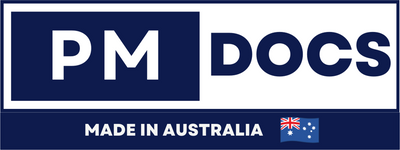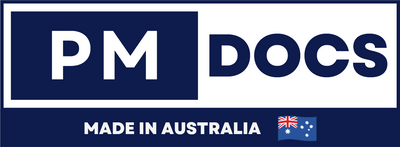Best Practices For GDPR Toolkit Success In Australia
Introduction
A GDPR toolkit can provide a structured approach to achieving compliance and managing data protection requirements effectively. By following best practices such as conducting regular data audits, implementing secure data storage measures, and providing ongoing staff training, organizations can ensure GDPR toolkit success in Australia.

Best Practices For GDPR Toolkit Success In Australia
As Australia continues to strengthen its data protection regulations, understanding the General Data Protection Regulation (GDPR) becomes essential for businesses operating in or dealing with the European Union. Below are key best practices for leveraging a GDPR toolkit successfully within the Australian context.
1. Understand GDPR Basics - To effectively utilize a GDPR toolkit, organizations must have a solid understanding of the foundational principles of GDPR. This includes key concepts such as data subjects' rights, consent, data processing principles, and liability. Familiarizing yourself with this framework ensures that your toolkit aligns with necessary legal standards.
2. Tailor the Toolkit to Australian Legislation - While the GDPR provides a high standard for data protection, it's important to adapt the toolkit to the unique landscape of Australian data laws, such as the Privacy Act 1988. Ensure your toolkit addresses both GDPR requirements and local regulations to create a comprehensive framework.
3. Conduct a Data Inventory - A successful GDPR toolkit implementation begins with knowing what data you hold and how it is processed. Conduct a thorough data inventory to catalog all data assets, identifying data types, sources, usage, and storage protocols. This practice lays the groundwork for building robust data governance.
4. Develop a Compliance Roadmap - Creating a roadmap for compliance is essential for maintaining GDPR alignment. This roadmap should include timelines, milestone achievements, roles, and responsibilities. Through careful planning, organizations can anticipate compliance challenges and proactively address them.
5. Invest in Training and Awareness - Support from employees at all levels is vital for successful compliance. Regular training sessions help employees understand GDPR requirements, data protection measures, and organizational policies. Promoting a culture of data protection within your organization will enhance commitment toward compliance efforts.
6. Implement Data Protection by Design - Integrating data protection measures into the development and design of new systems and processes is a GDPR requirement. By adopting a ‘data protection by design’ approach, organizations can minimize potential data breaches and ensure that data privacy is maintained throughout their operations.
7. Use Technology Wisely - Leverage tools and technologies that help automate compliance tasks, such as data mapping, risk assessments, and maintaining records of data processing activities. Investing in up-to-date technologies that support GDPR compliance can lead to increased efficiency and accuracy in data management processes.
8. Prepare for Data Breaches - Despite the best efforts, breaches may still occur. A robust incident response plan must be part of your GDPR toolkit to manage breaches effectively. This should include protocols for breach detection, reporting to authorities, and communication with affected individuals to ensure compliance with GDPR's breach notification requirements.
9. Regularly Review and Update Policies - The landscape of data protection is ever-evolving, and so are the requirements of GDPR. Organizations in Australia should routinely audit their compliance status, reviewing and updating policies, processes, and tools in their GDPR toolkit to stay aligned with both local and international data protection standards.
How GDPR Toolkit Supports Long-Term Compliance In Australia
As businesses in Australia increasingly engage with international markets, the importance of data protection has become paramount. The General Data Protection Regulation (GDPR) not only sets a high standard for data privacy in the European Union but also influences compliance practices globally, including in Australia. Here are several ways in which the GDPR Toolkit can support organizations in maintaining long-term compliance:
1. Comprehensive Compliance Framework
The GDPR Toolkit provides a structured approach to compliance by offering guidelines on policies, procedures, and documentation required to align with GDPR standards. This comprehensive framework assists Australian organizations in establishing a robust data protection strategy that meets both local and international regulations.
2. Enhanced Data Governance
By implementing the GDPR Toolkit, organizations can develop effective data governance models. These models facilitate better management of personal data, ensuring that data is collected, processed, and stored according to strict regulations. Enhanced data governance not only minimizes risks but also fosters trust with customers.
3. Risk Assessment and Management
The GDPR Toolkit includes risk assessment tools that help organizations identify and mitigate data privacy risks. By regularly assessing their data practices, businesses can ensure they proactively address potential threats, thereby strengthening their long-term compliance posture.
4. User Rights and Transparency
GDPR emphasizes user rights, including the right to access, rectification, and erasure of personal data. The Toolkit provides resources to help businesses implement processes that respect these rights, promoting transparency and accountability. This boosts consumer confidence and enhances the organization's reputation.
5. Training and Awareness Programs
A crucial aspect of long-term compliance is the continuous education of staff on data protection laws. The GDPR Toolkit offers training modules designed to raise awareness among employees about data privacy responsibilities, leading to a culture of compliance throughout the organization.
6. Documentation and Record-Keeping
The Toolkit promotes the importance of maintaining comprehensive records of data processing activities. By facilitating proper documentation and record-keeping, organizations can demonstrate their commitment to compliance during audits or investigations, thereby ensuring accountability.
Common Mistakes To Avoid When Using GDPR Toolkits
Here are some common mistakes to avoid when using GDPR toolkits.
1. Neglecting Customization - Many organizations mistakenly treat GDPR toolkits as one-size-fits-all solutions. Each business has unique data processing activities, and failing to customize the toolkit to fit specific organizational needs can result in inadequate compliance measures and potential legal issues.
2. Overlooking Employee Training - A common error is not providing sufficient training for employees on data privacy principles and how to implement the guidelines from the toolkit. It’s crucial for staff to understand the GDPR requirements and the organization’s policies to ensure compliance.
3. Ignoring Ongoing Compliance - Organizations often assume that implementing a GDPR toolkit is a one-time task. However, GDPR compliance is an ongoing process that requires regular updates, audits, and reviews to adapt to changes in regulations or company operations.
4. Misunderstanding Legal Terminology - Many users do not fully grasp the legal terminology used in GDPR toolkits, leading to misinterpretation of guidelines. It is advantageous to have legal counsel review the toolkit to ensure that the organization's understanding aligns with legal requirements.
5. Failing to Document Processes - Documentation is key to demonstrating compliance. A common mistake is neglecting to document the processes and decisions made while implementing the toolkit. Keeping thorough records helps protect the organization during audits or investigations.
6. Ignoring Specific Data Types - Not all data is treated equally under the GDPR. Organizations sometimes fail to address specific categories of data, such as sensitive personal data, which require additional handling measures. Toolkits should include tailored steps for such data types.
7. Relying Solely on Technology - Some businesses mistakenly believe that using GDPR compliance software or toolkits alone will solve their problems. However, relying solely on technology without incorporating human oversight and expertise can lead to gaps in compliance.
Conclusion
Implementing a successful GDPR toolkit in Australia requires a multi-faceted approach that encompasses thorough data mapping, regular staff training, and robust policy development. By proactively addressing compliance needs and fostering a culture of privacy, organizations will not only navigate GDPR challenges effectively but also build trust with customers. As data protection continues to grow in importance, adopting best practices will position businesses for success in a global market where privacy is paramount.




